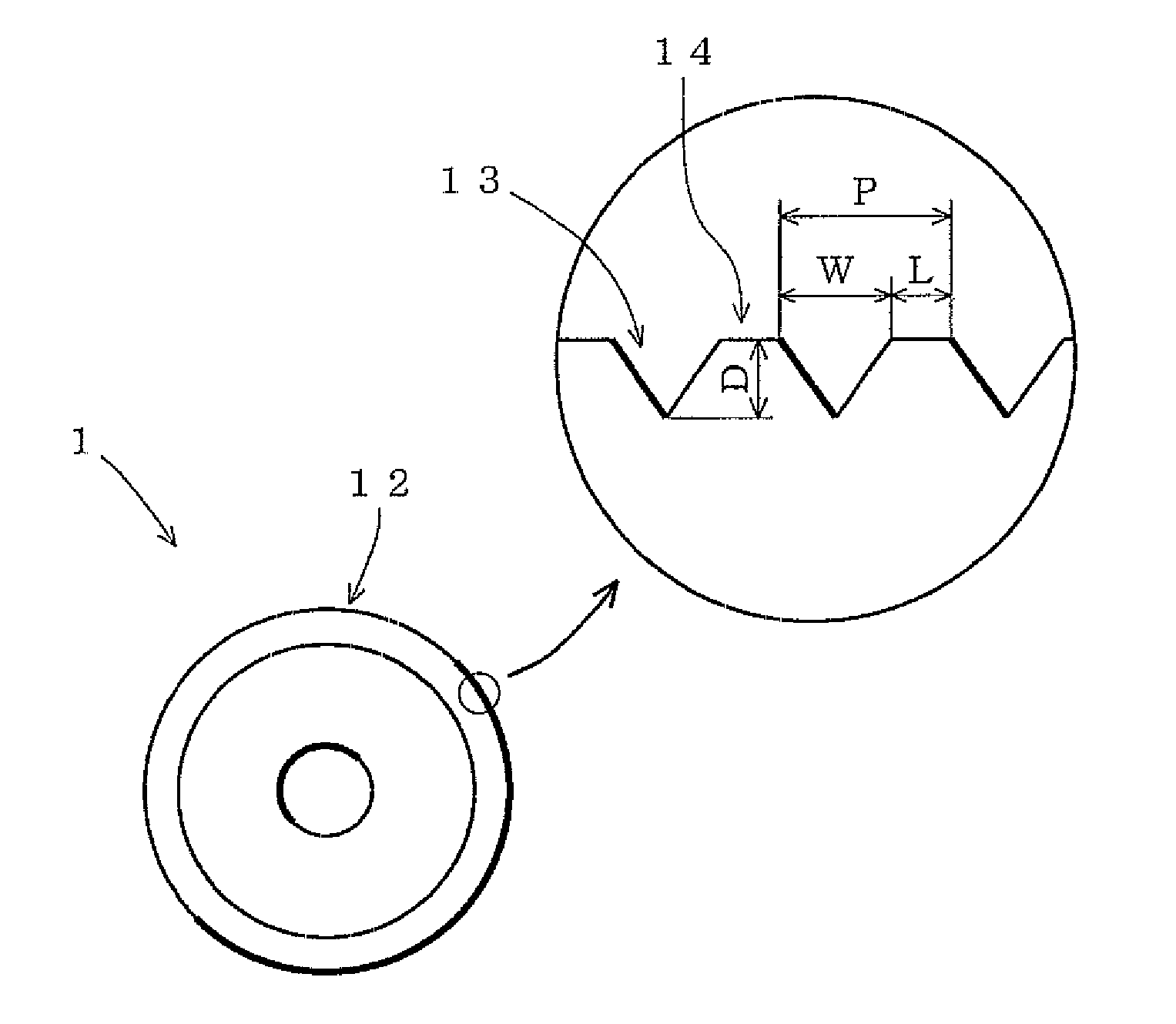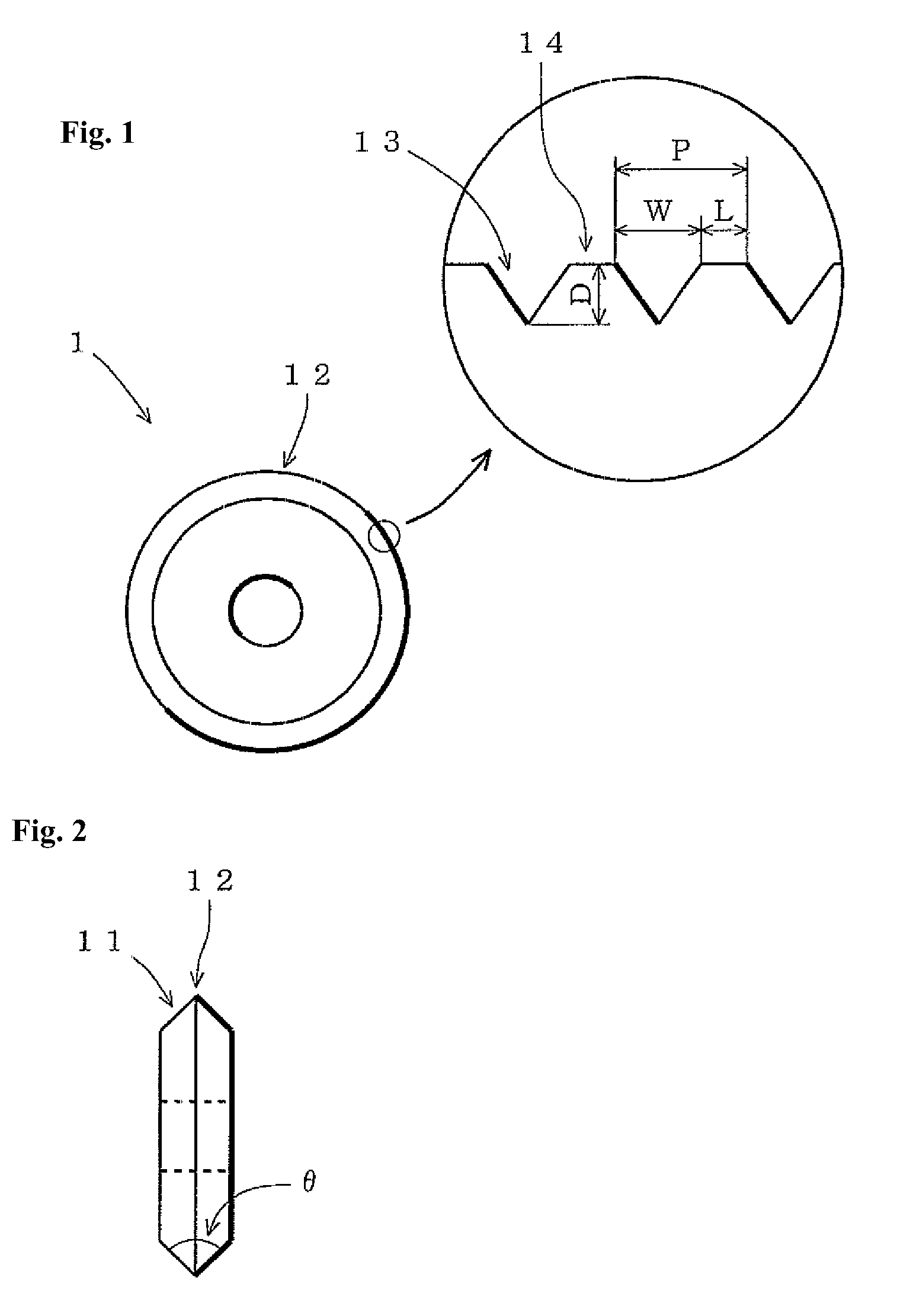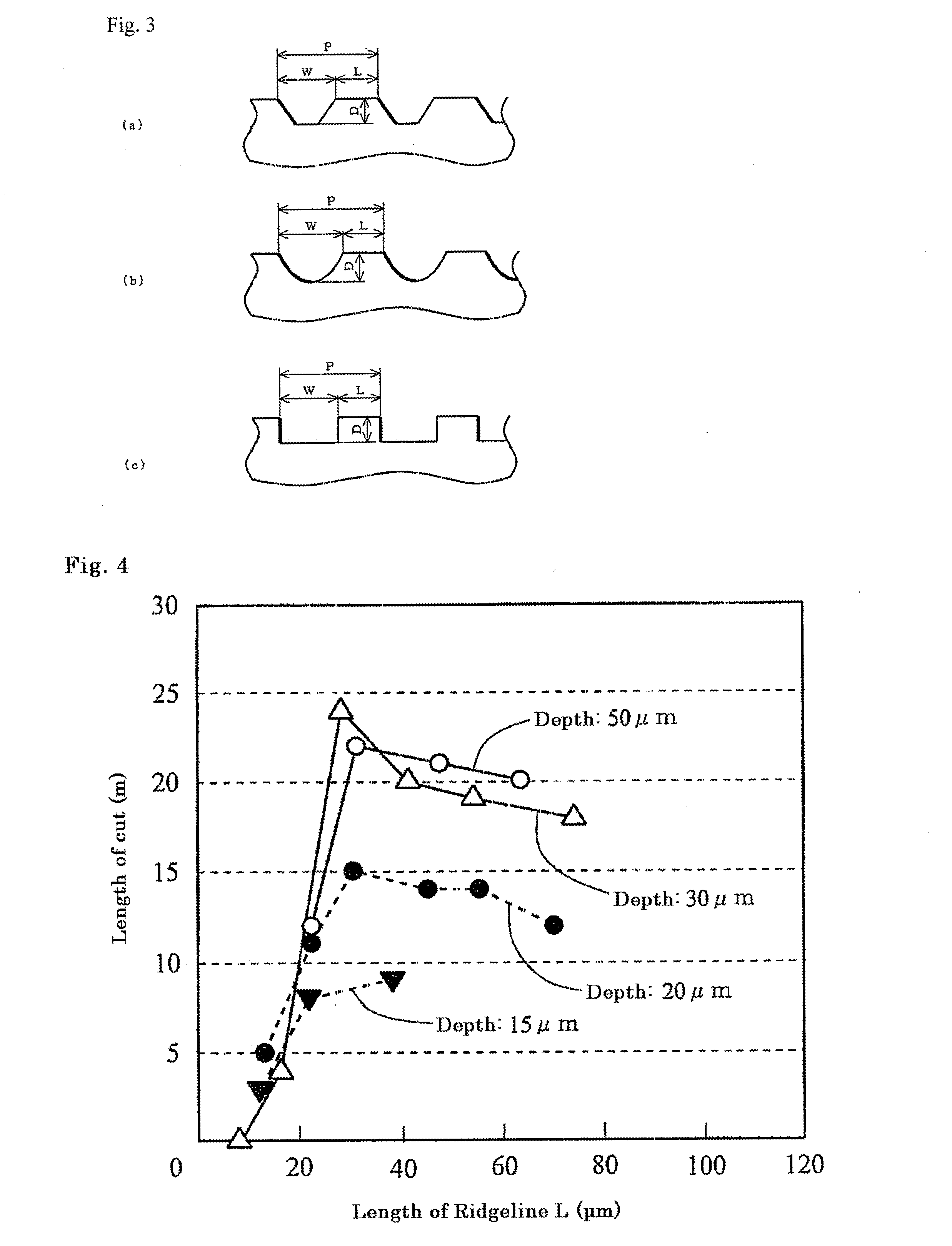Scribing wheel and method for scribing brittle material substrate
a brittle material and substrate technology, applied in the direction of paper/cardboard containers, manufacturing tools, transportation and packaging, etc., can solve the problems of inconsistency in the size of the pieces gained, lower yield, and inconsistent shrinkage rate, so as to achieve good scribing effect, long length of cut, and low cost
- Summary
- Abstract
- Description
- Claims
- Application Information
AI Technical Summary
Benefits of technology
Problems solved by technology
Method used
Image
Examples
Embodiment Construction
[0051]In the following, the scribing wheel according to the present invention is described in detail, but the present invention is not limited to these embodiments.
[0052]FIGS. 1 and 2 show the scribing wheel according to one embodiment of the present invention. FIG. 1 is a front diagram showing the scribing wheel as viewed in the direction of the rotational axis, and FIG. 2 is a side diagram. As shown in FIG. 2, a blade 11 in V shape is formed around the circumference of a wheel in disc form.
[0053]The angle θ of the edge of this blade 11 is usually obtuse, for example within a range of 90° to 160° (specifically, 100° to 140°), though an appropriate value can be set in accordance with the material and thickness of the substrate to be cut. As shown in FIG. 1, a number of grooves 13 in V shape are created at predetermined intervals in the edge 12 of the blade 11 along the ridgeline. Here, the number of grooves 13 in the blade edge 12 are designed in the order of micrometers, and differ...
PUM
| Property | Measurement | Unit |
|---|---|---|
| outer diameter | aaaaa | aaaaa |
| angle | aaaaa | aaaaa |
| depth | aaaaa | aaaaa |
Abstract
Description
Claims
Application Information
 Login to View More
Login to View More - R&D
- Intellectual Property
- Life Sciences
- Materials
- Tech Scout
- Unparalleled Data Quality
- Higher Quality Content
- 60% Fewer Hallucinations
Browse by: Latest US Patents, China's latest patents, Technical Efficacy Thesaurus, Application Domain, Technology Topic, Popular Technical Reports.
© 2025 PatSnap. All rights reserved.Legal|Privacy policy|Modern Slavery Act Transparency Statement|Sitemap|About US| Contact US: help@patsnap.com



